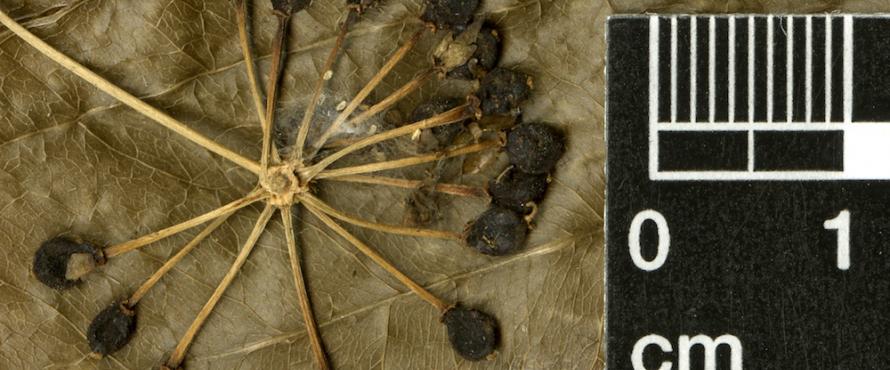Sometimes when you need something, you have to make it yourself.
That’s exactly what Northeastern Illinois University Anthropology Professor Jon Hageman and his team have done with the Mesoamerican Ethnobotanical Database.
Having already demonstrated that ancient botanical remains could be collected from lowland tropical locations during excavations of prehistoric Maya sites in Belize, the team discovered that few resources existed to identify the family, genus or species of the specimens.
Thus began the journey from problem to solution that became available online to anyone in the world in January 2014 as a work in progress and fully completed on March 15, 2016.
The team’s specimens were part of a collection recovered by the 2005-2009 NEIU Archaeological Field School in Belize, part of a multi-year research program investigating patterns of plant use and social organizations among rural Maya populations in the Late/Terminal Classic (A.D. 600-900) period. Directed by Hageman, the Field School trained students in archaeological field methods, excavation procedures and collection and analysis of samples.
“The literature indicates that contemporary Maya populations use about 1,650 species of plants, but only 200 or so species had been recovered from archaeological sites in the area. We had more than 1,200 ancient plant parts from our excavations alone that we could not identify,” said Hageman, who also is the coordinator of Northeastern’s University Honors Program. “So we figured that, if no such resource existed, we'd have make our own if we were going to be able to move forward. “
In 2010, Hageman’s team approached Christine Niezgoda, collections manager in Botany at Chicago’s Field Museum of Natural History, about creating a hybrid reference, with online images and a published book. She agreed to provide access to the Searle Herbarium, and the seeds of the Mesoamerican Ethnobotanical Database project were planted. Anthropology majors Will Graham, Kelsey Nordine and Michael Trojan began the initial work as volunteers that summer, and Nordine continued through 2011.
“By late 2011 it was clear that this resource would be much more useful if it were 100 percent online, and I needed specialized help to do the database work and much of the technical botanical morphology descriptions,” Hageman said. “As part of my Fall 2012 sabbatical I wrote a proposal to the National Science Foundation (NSF) that would pay me as well as two students and two consultants to complete the database.”
Hageman proudly added that for archaeology it is common to have to revise and resubmit NSF proposals two or three times, but this time the award was granted on the first submission. “The amount of work completed by Northeastern Anthropology students enabled me to write a stronger proposal,” Hageman noted.
The approved proposal meant the much-needed help would be available to make the project a reality. Anthropology major Scott Riding and Adam Jovanovich, a Geography and Environmental Sciences graduate student, were selected to assist.
“Over the span of four years we identified, located and scanned more than 2,500 plant vouchers [plant samples mounted on 11-by-17-inch sheets of paper] representing more than 1,300 species from 148 plant families,” Hageman said of the tedious process.
This included taking close-up, high-resolution scans of the reproductive parts of plants, and photos of seeds taken through a binocular microscope. Also included is information from more than 30 sources on the use of these plants by historically documented and contemporary indigenous populations in the area.
“I think it's important to recognize that none of this would have been possible without the hard work and dedication of Northeastern students,” Hageman said. “The Mesoamerican Ethnobotanical Database is not only an example of a contribution to a discipline that will remove barriers to analysis of ancient plant use, and is available free of charge to anyone with an internet connection, but is also built on a foundation of undergraduate research, both in the field and in the museum. Absent the Anthropology majors who worked on this project, this resource would not exist.”
Pictured above: A close-up of Smilax aristolochiifolia








